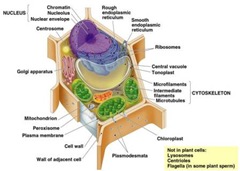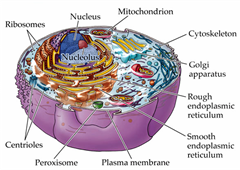differentiate between animal and plant cell.
Plant cell vs Animal cell
1 A plant cell is usually larger in size. An animal cell is comparatively smaller in size. 2  Plant Cell is enclosed by a rigid cellulose cell wall in addition to plasma membrane.
Plant Cell is enclosed by a rigid cellulose cell wall in addition to plasma membrane. 
Animal Cell is enclosed by a thin, flexible plasma membrane only.
3 plant cell cannot change its shape. An animal cell can often change its shape.
4 Plastids are present in plant cell. Plant cells exposed to sunlight contain chloroplast. However ,Plastids are usually absentin anmal cell.
5 . A mature plant cell contains a large central vacuole. An animal cell often possesses many small vacuoles.
6. Nucleus lies on one side in the peripheral cytoplasm in plant cell. Nucleus usually lies in the centre in animal cell .
7. In plant cells centrioles are usually absent except in motile cells of lower plants. Centrioles are practically present in animal cells
8. Lysosomes are rare in plant cell. Lysosomes are always present in animal cells.
9 Glyoxysomes may be present in plant cell. They are absent in animal cell.
10. Tight junctions and desmosomes are lackingin plant cell. Plasmodesmata is present. In animal cell tight junctions and desmosomes are present between cells. Plasmodesmata are usually absent.
11 .Plant cell reserve food is generally in the form of starch. animal cell reserve food is usually glycogen.
12. Plant cell synthesise all amino acids , coenzymes and vitamins required by them. Animal cell cannot synthesise all the amino acids, co enzymes and vitamins required by them.
13 .in plant cell spindles formed during cell divisions in anastral i.e. without asters at opposite poles. In animal cell spindle formed during cell division is amphiastral i.e. has an ester at each pole.
14.In plant cell cytokinesis occurs by cell plate method.In animal cell cytokinesis occurs by construction or furrowing.
15 Plant cell does not burst if placed in hypotonic solution due to the presence of the cell wall. Animal cell lacking contractile vacuoles usually burst, if placed in hypertonic solution.



.png)